Understanding Your Patients: Terms Aesthetic Practitioners Should Know
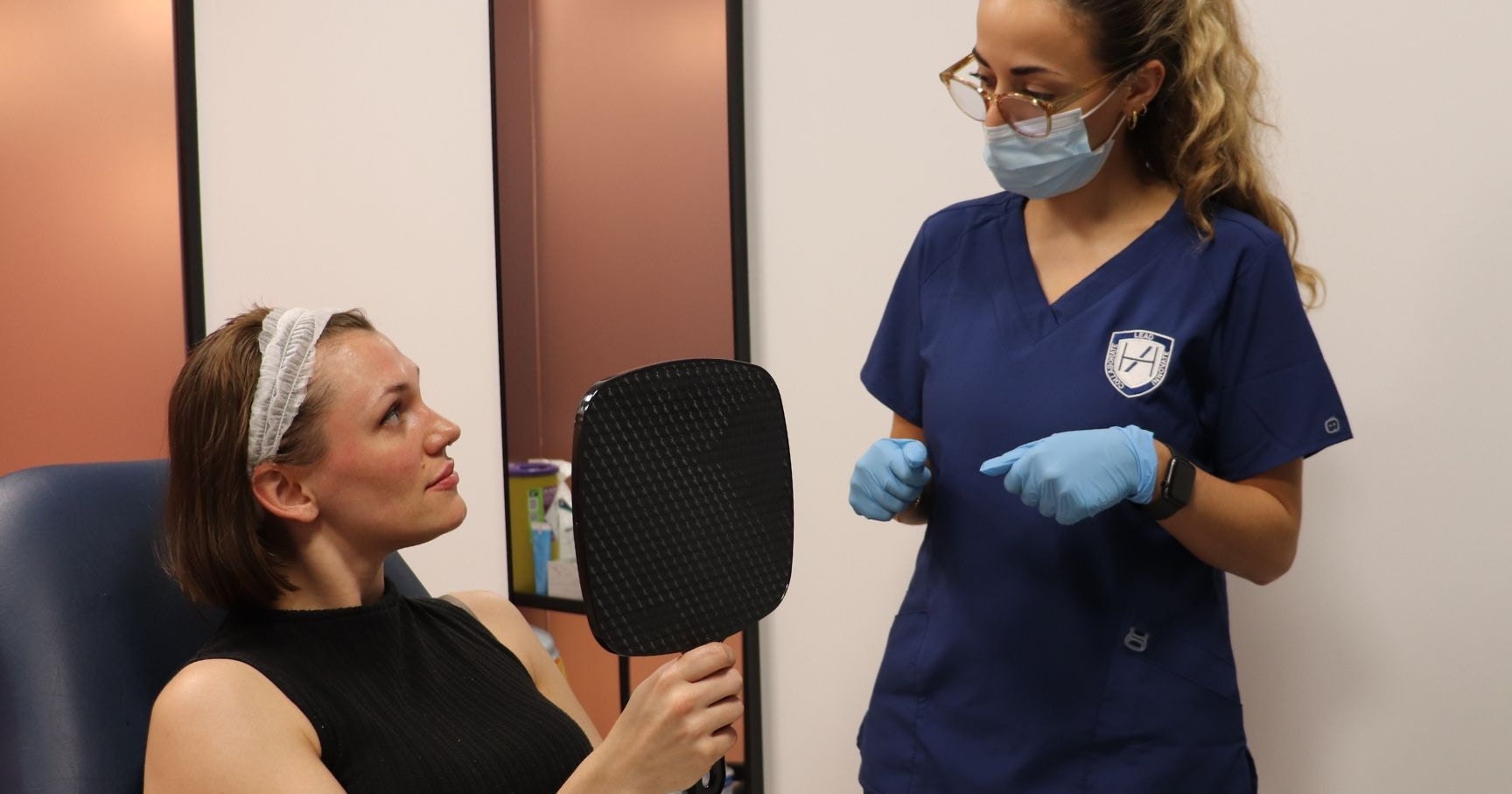
All aesthetic practitioners should know the common terms patients commonly use to describe their concerns.
Whilst some are obvious, some are more ambiguous. For example, “smile lines” can refer to both lateral canthal lines and nasolabial folds. Any misunderstandings could drastically affect your consultation, treatment planning and outcomes. So, it’s important to understand the language your patients use in order to get the most from your consultation.
This will allow for effectively communicated discussions and a deeper understanding of their concerns and goals. Hopefully, this will get you both on the same page for the best possible outcome!
Read on for a deeper grasp of what your patients may be trying to communicate and how to reflect this in your treatment planning.
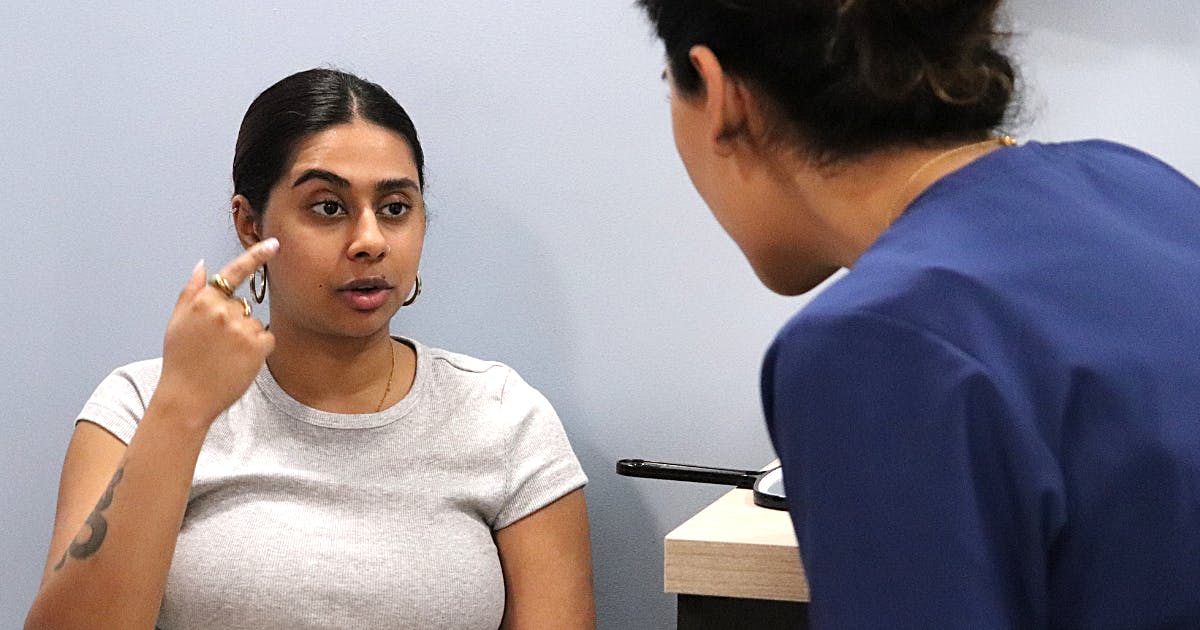
Commonly used patient terms for facial anatomy
Here’s a rundown of some of the most frequently used terms we hear from patients relating to specific presentations…
Glabellar complex
- 11s
- 11 lines
- Anger/angry line(s)
- Frown line(s).
Lateral canthal lines
- Crow’s feet
- Laughter lines
- Smile lines.
Nasolabial folds
- Nose-to-mouth lines
- Smile lines
- Laughter lines.
Often patients confuse nasolabial folds with melomental folds, as explained below. It’s always good to get them to point out their concerns to avoid miscommunications.
Melomental folds
- Marionette lines or folds
- Puppet lines.
Again, these are frequently confused with nasolabial folds.
Perioral rhytids
- Smoker’s lines
- Lipstick lines
- Barcode lines.
Be mindful of the fact that non-smokers presenting with this concern may object to them being referred to as ‘smoker’s lines’. Vertical lip lines, perioral rhytids or barcode lines are all preferable terms.
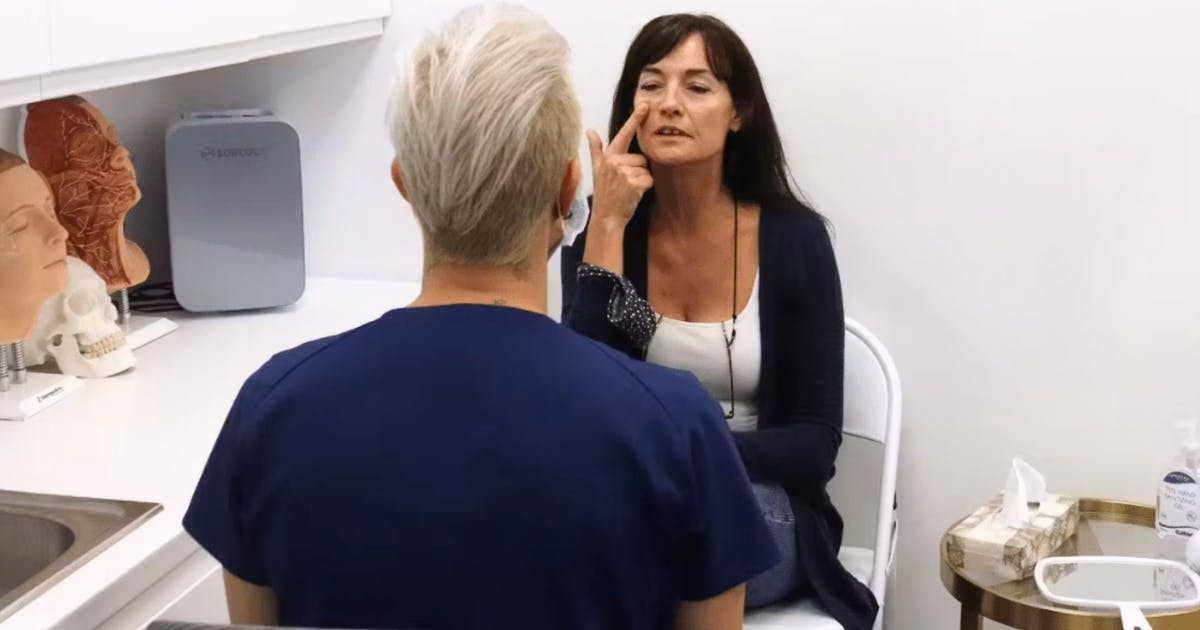
What patients often mean when discussing aesthetic concerns
As a medical aesthetics practitioner, you need to be able to decipher what patients may be referring to when they describe how they feel about their appearance.
Some may use specific terms for areas, but not all patients will know their exact treatment concern. They may instead come to you with concerns about how their face expresses emotion.
These are numerous, somewhat vague statements that cosmetic injectors hear repeatedly. Here we explain what these usually refer to. Below you’ll also find information on how to treat each of these indications.
“I look sad”
There are various attributes that can contribute to a ‘sad’ appearance, including:
- Downturned mouth
- Hooded eyes
- Facial sagging including jowl formation
- Perioral rhytids
- Upwards rotation of the chin.
This can be managed on a bespoke basis dependent on the predominant origin of concern. Toxin treatments can be used, for example, to manage the depressor anguli oris (DAO) which can cause downturned corners of the mouth. Filler plans can mask facial descent by replacing volume loss, often involving multiple area treatments. Skin treatments such as skin boosters, polynucleotides and chemical peels can also help to manage fine rhytids.
“I look angry”
Assess the glabellar complex when your patient expresses concern about feeling as if they have an ‘angry’ appearance. This is often related to the appearance of frowning.
Vertical ‘number 11 lines’ are the most common reason for an ‘angry’ facial appearance at rest.
This appearance will have multiple contributors, for example, muscle action and reduced skin quality. Toxin treatment may be used.
There is a blindness risk from filler treatment here. We advocate not treating with fillers here for this reason.
Dynamic horizontal forehead lines and perioral rhytids may also contribute to a feeling of ‘looking angry’. Toxin and skin treatment plans can be useful here.
“I look tired”
One of the most common patient concerns is feeling that they look ‘tired’ even when they aren’t. This can be multi-factorial.
- Dull, dehydrated and/or dry skin, often referred to as looking ‘grey’ or ‘ashy’
- Poor or sub-optimal skin quality
- Fine lines
- Facial sagging including jowl formation and infraorbital oedema
- Hollowing - check for the tear troughs, mid-face and temples
- Hooded eyes.
If the brow is lowered, you may wish to consider a ‘botox brow lift’ to improve this.
If you’re dealing with this specific concern, always consider a treatment plan that includes a first-line topical skincare regime. Skin treatments, such as chemical peels, microneedling or skin boosters, may also be beneficial.
By first preparing the patient’s ‘canvas’, they should see better results from any injectable toxin or filler treatments they progress to. This can also help them to establish good skin health habits to better maintain their results.
“I look gaunt”
Whether as a result of ageing or weight loss, gauntness can be a concern related to various factors. This can be closely related to concerns regarding looking tired in some circumstances.
- Dry, dehydrated or dull skin - as before, often referred to as looking ‘grey’ or ‘ashy’
- Tear trough hollowing
- Mid-face volume loss
- Temple hollowing.
Filler plans will be useful for volume augmentation here, with product selection being an important factor in the aesthetic outcome. Again, skin treatments to improve the canvas of the face will also help improve results.
“I look old”
This can be a particularly sensitive concern to navigate. The simplest way to address this is to ask them to show you a photo of how they looked when they were younger. From there, you can assess what exactly they may be concerned about and gently consider rejuvenating treatments considering realistic expectations for outcomes
As with any concerns, signs of ageing should be assessed holistically. Take into account their skin quality rather than just what specific botox or filler treatments may help with.
- Dry, dehydrated or dull skin - often described as ‘grey’ or ‘ashy’
- Skin laxity
- Hyperpigmentation
- Fine lines, wrinkles or folds
- Volume loss or hollowing - check the mid-face, tear troughs and temples
- Facial sagging - tissue descent resulting in jowl formation and/or infraorbital oedema
- Downturning of the mouth
- Chin dimpling
- Shortening of the lower third of the face due to bone and fat loss.
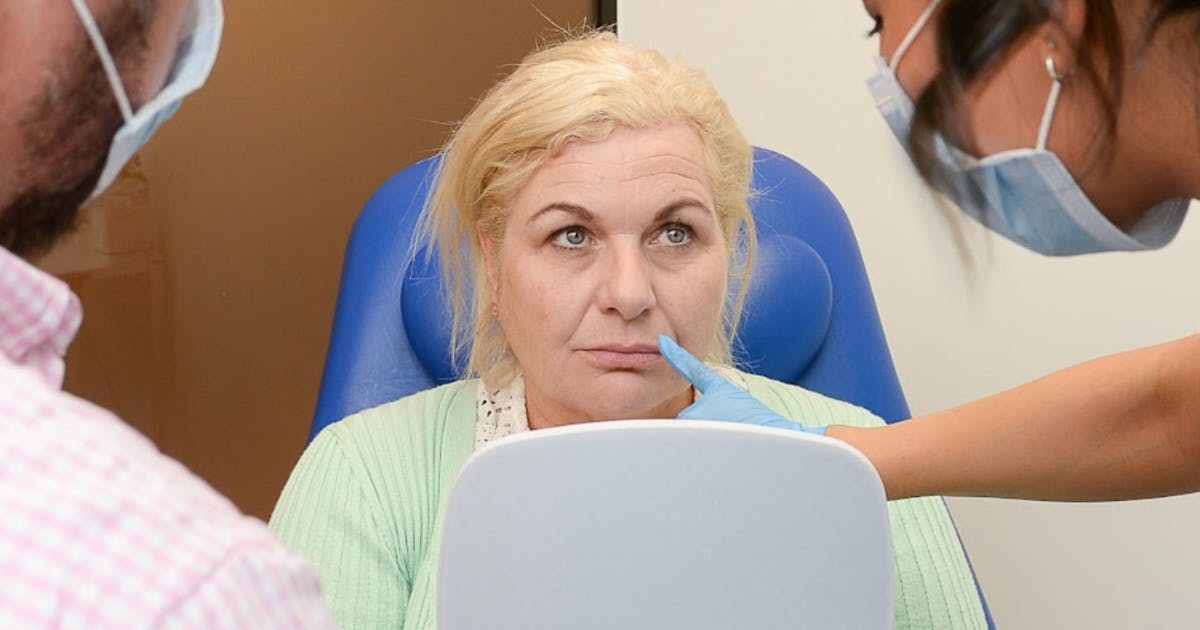
Treatment plans for addressing patients’ aesthetic concerns
Always take a 360° approach to addressing your patients’ aesthetic concerns. This means starting with the skin and then considering their goals in relation to their whole face - not in isolation. By doing this, you’ll achieve optimal outcomes that meet their aims in a safe, effective manner that delivers natural-looking results.
When you treat specific areas or concerns in isolation, you run the risk of unnatural or displeasing results. Failing to assess the face as a whole can lead to results that aren’t proportionate or in keeping with their natural appearance.
You can also space out treatments over time should it feel appropriate to do so.
Above, we’ve set out various indications and treatments to consider - many of which apply to more than one scenario. Here we explore these in more detail so you can enhance your treatment planning skills.
Tackling dry, dull or dehydrated skin
As we age, our skin’s surface becomes prone to an increased build-up of dead skin cells. This is due to slower cell turnover and renewal. The result can be dull, ‘ashy’ or ‘grey’ skin.
As our collagen and elastin production decreases as part of the ageing process, our skin can also experience dryness and dehydration. These issues can arise for various other reasons, too, including as a side effect of illness or medication.
Patients may express this as having ‘lost their glow’ and wanting to get it back.
Here are some of the treatment options to consider in this situation:
- A personalised skincare routine they can follow at home - often involving topical hyaluronic acid, vitamin C and/or retinol products, plus a gentle chemical exfoliant for dullness
- Collagen induction therapy - a course of microneedling to encourage their natural collagen production and remove dead skin cells
- Chemical peels - a course, starting with just one to see if they enjoy this approach, can remove dead skin cells and help to restore radiance to the skin
- Injectable skin boosters - these can include ‘injectable moisturisers’ such as Profhilo®, where honey-like consistencies of hyaluronic acid are placed under the skin to increase hydration and stimulate collagen production.
You can learn all about these skin analysis, skin treatment options, skincare ingredients and how to formulate bespoke skincare routines in our Cosmetic Dermatology Course. This is a certified training pathway that provides a thorough grounding in theoretical and practical skin assessment and treatments for injectors.
Available as a standalone course or as part of our Combined Level 7 programme, it provides invaluable advice for aesthetics practitioners. Not only will the knowledge and skills you acquire help you to optimise outcomes for better patient satisfaction. It’ll also open up your patient base to a wider cohort, including those who aren’t interested in injectables. You’ll also broaden your ability to connect with patients more regularly and gain a passive income selling products.
If you’re looking for aesthetics training that allows you to make your money back as quickly as possible, our Combined Level 7 is that course!
You can also add our Profhilo Training Course to your learning experience so you can include this in-demand service on your treatment menu.
Botox for a downturned mouth
If the patient’s mouth is downturned at the corners, we can inject the depressor anguli oris - with a small amount of botulinum toxin. You’ll often hear this referred to as ‘DAO Botox’.
This relaxes the muscles that pull the corners of the mouth downwards, resulting in less pull. It will often soften the appearance of a melomental fold, too.
Learn more about this treatment in our article, Treating a Down-Turned Mouth with Botox.
Treatment options for hooded eyes
Hooded eyes can be challenging to treat non-surgically.
If mild skin laxity in the eyelids is a factor, consider polynucleotides administered to the eyelids and periocular region. You’ll be taught the various applications of this novel injectable during our Polynucleotides Training Course. This is also included as a module within our Cosmetic Dermatology Course and Combined Level 7.
To raise the brow slightly and open up the eye, a ‘botox brow lift’ may be effective. This depends on the patient’s anatomical presentation and the severity of the hooding.
You can find out how to administer this treatment in our article, Botox Brow Lift: Injection Techniques.
If this isn’t possible or doesn’t provide the desired result, refer on for surgery. An upper eyelid blepharoplasty is the usual surgical route for correcting hooded eyes.
How to address volume loss, hollowing and facial sagging
In terms of facial sagging, we’re predominantly looking at descent of tissues causing changes like jowls. For hollowing, this tends to point more towards volume loss in the central face, reducing the usual contours of youth, such as the ogee curve.
Mid-face volume loss
Fat atrophy, bone resorption, skin laxity and gravity can combine to make the ageing mid-face descend.
Mid-face filler treatments such as the following, can restore volume.
- Cheek apex
- Zygomatic arch
- Deep medial cheek fat
- Lateral temporal cheek fat.
To find out more about this, check out the specialist advice in our Key Mid-Face Filler Treatments for Facial Rejuvenation article.
These are useful treatments to refine as they can provide impactful results and solid patient satisfaction. The anatomy, assessment and treatment of some of these areas are covered in our Facial Contouring Masterclass.
Tear trough treatments for hollowing
A true tear trough requires a sunken appearance in the infraorbital region. Where this type of hollowing is present, carefully selected patients are likely good candidates for direct tear trough filler.
Where this is not ideal - or preferred - indirect tear trough treatment, managing the cheek, can support the tear trough and rejuvenate the appearance of the area.
Whilst polynucleotides can provide some relief for under-eye concerns, where there is significant hollowing present, filler is the primary route. You can refer to our article on When to Use Tear Trough Filler Versus Polynucleotides for more information.
This also includes details of our Tear Trough Filler Masterclass for those of you looking to learn best practice techniques, including patient selection.
Treating jowls
There are numerous approaches you can take to treating jowls with filler.
However, there is another non-surgical option that negates the need for filler if the jowls are mild. Profhilo® Structura is a new injectable treatment that regenerates subcutaneous fat whilst stimulating collagen and elastin production. Specifically designed for use in cases of hollowing and sagging, it’s certainly worth considering Structura for jowl treatments.
In order to add Structura treatments to your service menu, you’ll need to have first completed a Profhilo® course. You can then progress to our official Profhilo® Structura Training Course. However, if you haven’t yet obtained your Profhilo® training certification, you can take this course in the morning and our Structura course in the afternoon - just ask our Course Advisors about this option.
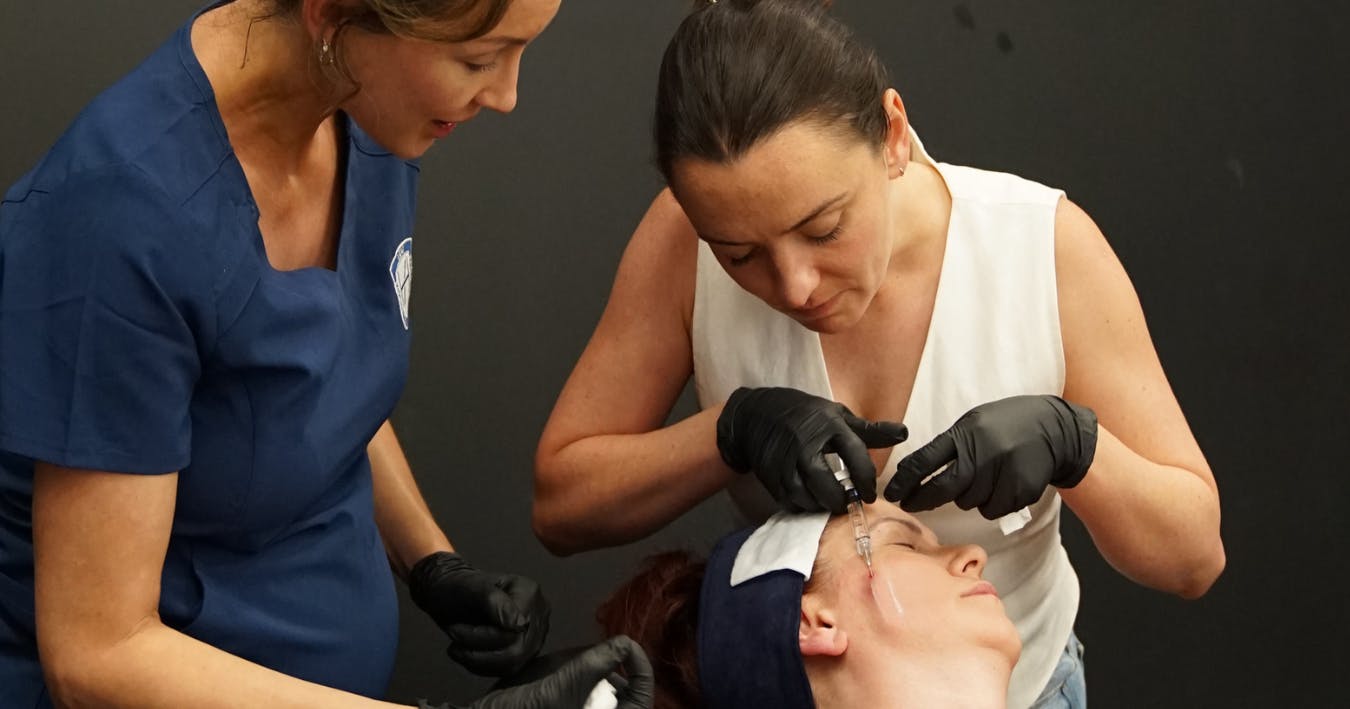
Temple filler to restore volume loss
The temples become increasingly concave as we age. This volume loss can be restored with the judicious use of temple filler.
We’ve previously provided temple filler information but please note, this is an advanced aesthetic treatment. It should not be administered by anyone without the necessary training.
Treating perioral rhytids
Ensuring optimal skin quality should be the primary goal before turning to injectables. You can consider the following to reduce fine lines and improve the skin’s appearance:
- Topical skincare, such as retinol
- Microneedling
- Polynucleotides
- Profhilo®.
Toxin treatment may also improve these in some patients. If these lines persist, tiny amounts of filler can be used to treat them directly.
In addition, assess whether lip filler - often to the vermillion border - could smooth these lines out. This can be done by adding definition without volume unless that’s part of the patient’s desired result.
How to treat hyperpigmentation in all skin tones
Hyperpigmentation can visually age us, despite it not being something patients necessarily associate with the ageing process.
This is especially true of Caucasian skin and paler skin tones where it generally presents as brown patches that are easy to spot. In skin of colour, especially deeper Black skin tones, this can be trickier to identify despite also appearing as darker patches.
Darker skin tones are also more likely to experience post-inflammatory hyperpigmentation. This can appear after acne, trauma or other skin conditions.
Hyperpigmentation can be an incredibly rewarding concern to treat given how having a brighter, more even skin tone can significantly impact how patients feel about themselves.
Again, this is something we cover extensively in the Hyperpigmentation & Skin of Colour module of our Cosmetic Dermatology Course. Whilst this issue can affect all Fitzpatrick skin types, it can require a different approach depending on how melanated the skin is.
Effective hyperpigmentation treatment pathways should always start with a review of the patient’s skincare routine. Retinoids and azelaic acid are examples of useful skincare ingredients for this concern. Stress the importance of daily broad-spectrum SPF use - ideally SPF 50 - every day, including during the winter months.
Once that has been optimised with your personalised recommendations and the skin has been adequately prepped, explore adding in:
- A course of chemical peels
- Polynucleotides have anecdotally been suggested to be useful here, though there is not enough evidence to confirm this yet
- Laser treatments such as intense pulsed light (IPL) or fractional laser resurfacing, if you offer them. Alternatively, you could refer to a colleague who offers courses of these services.
Correcting upwards rotation of the chin and chin dimpling
Don’t neglect the lower face when it comes to rejuvenation! These two treatments may feel inconsequential but they can have impactful results.
You can learn more about these treatments in our article, Chin Botox: Treating the Mental Crease and Preventing Upwards Rotation.
We hope this information is useful and remember - always get clarification as to exactly what your patient is trying to convey. It’s not their job to know or use the correct terminology, after all. Your understanding and effort in establishing their key motivation for treatment and goals will help to establish a trusting relationship.
Having a solid picture of what’s required should also improve your treatment planning and outcomes. What patient won’t love that and want to tell their friends?!
All information correct at time of publication
Download our full prospectus
Browse all our injectables, dermal fillers and cosmetic dermatology courses in one document
By submitting this form, you agree to receive marketing about our products, events, promotions and exclusive content. Consent is not a condition of purchase, and no purchase is necessary. Message frequency varies. View our Privacy Policy and Terms & Conditions
Attend our FREE open evening
If you're not sure which course is right for you, let us help
Join us online or in-person at our free open evening to learn more
Our Partners












STAY INFORMED
Sign up to receive industry news, careers advice, special offers and information on Harley Academy courses and services


